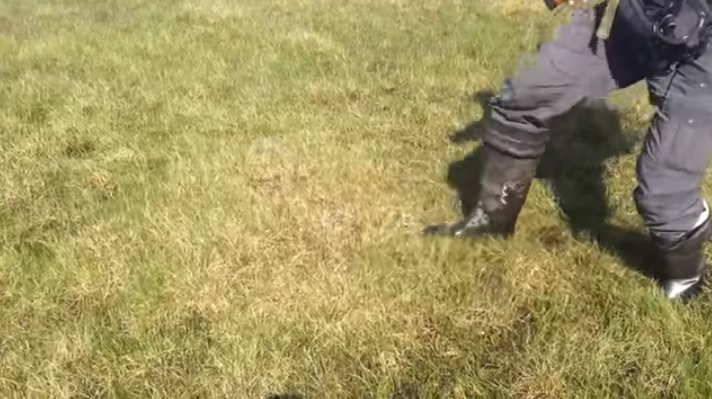MessageToEagle.com – Earth changes are visible in several places and Siberia is one of them. Some years ago we saw how several giant craters suddenly appeared in Siberia.
The huge Batagaika Crater, also known as the “Gateway to the Underworld” by local people who fear to go near the massive crater can help scientists to unlock the secrets of our planet’s past and future.
Now there are reports of bizarre and scary moving bubbles that have all of the sudden have been noticed in Siberia. The ground is moving beneath people’s feet. What is causing the movement?
According to scientists a ‘fountain of gas’ poured from jelly-like trembling earth in tundra on Belyy Island in northern Siberia. Researchers have been examining what at first looked to be a normal patch of grass. Then, the bubble suddenly started wobbling like jelly.
“It was like a jelly,’ said one researcher. We have not come across anything like this before.”
So far, 15 of the patches have been discovered on the island, averaging around 1 meter in diameter.
An early theory is that warm summer heat has melted the permafrost causing the release of long-frozen gases.
Some researchers think there is serious reason to be concerned if gas bubbles appear in the permafrost zone’. These kind of earth changes could have ‘unpredictable’ consequences.

See also:
Two Giant Mysterious Blobs Beneath Earth’s Surface Puzzle Scientists
Ancient Bubbles Reveal: Earth’s Early Atmosphere Was Thin
“We didn’t know about these bubbles before the expedition,”said Sokolov who is deputy head of ecological R&D station of the Institute of Ecology of Plants and Animals, in Labytnangi, Tyumen region, Ural Department of the Russian Academy of Sciences
“We walk dozens of kilometers every day and after having walked quite a lot we came across one such bubbles.
I’ve been working in Yamal for 20 years now – some of my peers have been here even longer – and it’s the first time I have ever seen this.
I’ve walked in the tundra for hundreds of kilometers and I went to the exact place where we spotted the first bubble last year at nearly exactly the same time.”
Scientists have now stripped the grass and dirt from one of these bubbles and recorded the escaping air, showing that it contains around 200 times more methane than normal air, and 20 times more carbon dioxide.
The cause of the moving bubbles is still unknown and more research must be conducted before we can learn what’s behind this phenomena.
One hypothesis is that Europe’s recent heat wave caused the tundra’s permafrost to thaw, releasing methane gas just below the surface.
“It is likely that 10 days of extraordinary heat could have started some mechanisms, and the higher level of permafrost could have thawed and released a huge amount of gases,” Sokolov said.
“Geologists suppose that there might be some gas leaking from the underground but it’s unlikely. There is solid permafrost under the bubbles.”
MessageToEagle.com







